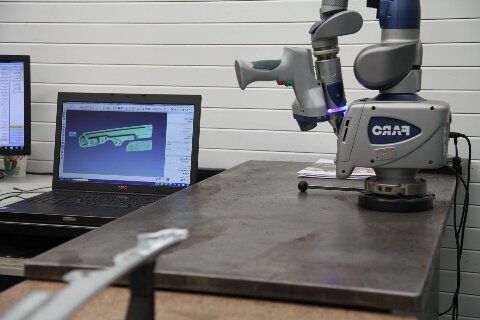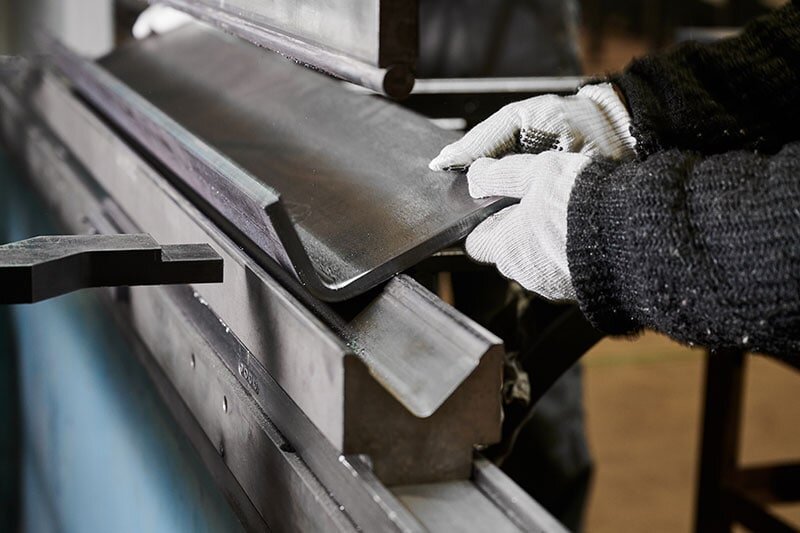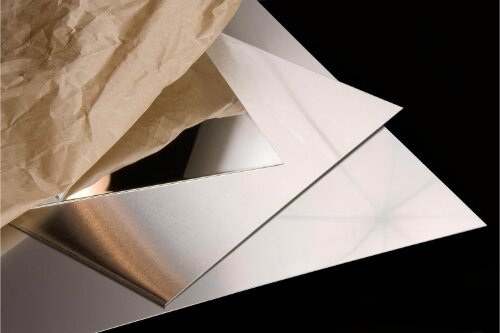Sheet metal sits at the core of countless products we use daily, from kitchen appliances to car bodies. Yet, for many, the process of transforming flat metal sheets into complex, functional parts remains a mystery. Sheet metal fabrication holds the key to unlocking a world of design possibilities and efficient manufacturing.
Metal takes on new life through fabrication. Let’s explore how this transformative process works and why it matters for your next project.
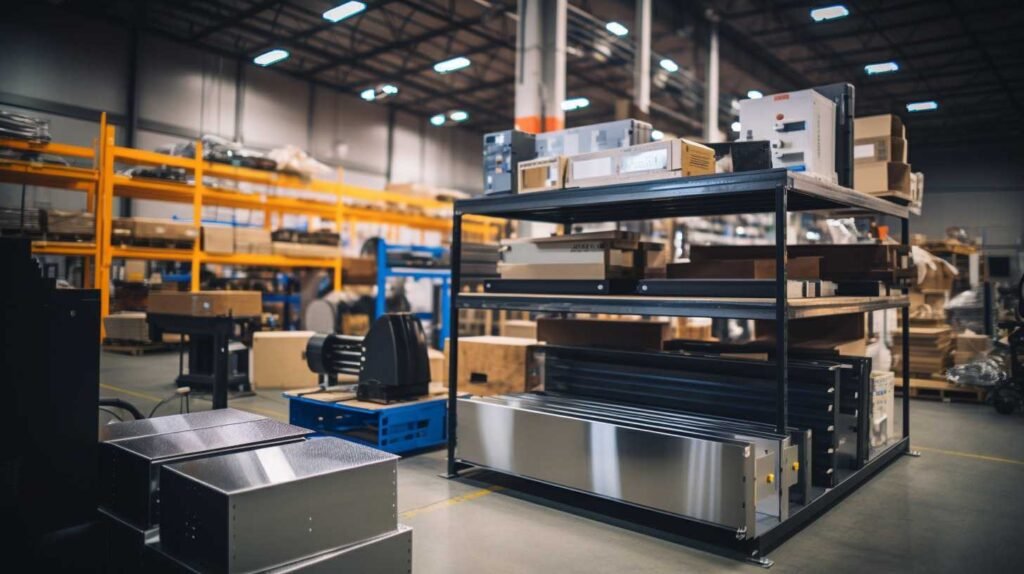
What Is Sheet Metal Fabrication?
Sheet metal fabrication is the process of shaping flat metal sheets into specific parts or products. It involves cutting, bending, punching, and assembling metal to create everything from simple brackets to intricate enclosures.
How Does the Sheet Metal Fabrication Process Work?
Sheet metal fabrication transforms flat metal sheets into useful parts and products. The process typically starts with design. Engineers create detailed blueprints using CAD software. These designs guide the entire fabrication journey.
Next comes cutting. Fabricators use various methods to cut metal sheets. Laser cutting offers precision for intricate designs. Plasma cutting works well for thicker materials. Water jet cutting is ideal for heat-sensitive metals.
Bending follows cutting. Press brakes apply controlled force to create angles and curves. This step shapes flat pieces into three-dimensional forms.
Assembly is often the final step. Welding, riveting, or fastening join separate pieces into complete products.
Sheet Metal Fabrication Cutting Techniques
Cutting techniques form the foundation of sheet metal fabrication. Let’s explore the most common methods used in the industry.
Laser Cutting
Laser cutting uses a focused beam of light to melt or vaporize metal. This high-precision method creates intricate shapes with clean edges. It’s ideal for complex designs and thin to medium-thickness materials. Laser cutting offers fast production speeds and minimal material waste.
Plasma Cutting
Plasma cutting employs a jet of ionized gas to slice through metal. It excels at cutting thicker materials that lasers struggle with. While not as precise as lasers, plasma cutting provides a good balance of speed and affordability for many projects.
Waterjet Cutting
Waterjet cutting uses a high-pressure stream of water mixed with abrasive particles. This method cuts through almost any material without heat. It’s perfect for heat-sensitive metals or when you need to avoid thermal distortion. Waterjet cutting produces exceptionally smooth edges.
Cutting With Shear
Shearing uses opposing blades to cut straight lines in sheet metal. It’s a fast and economical method for simple cuts on thinner materials. While limited in the shapes it can produce, shearing remains a staple in many fabrication shops for its speed and simplicity.
Punching
Punching uses specialized tools to create holes or shapes in metal sheets. It’s highly efficient for repetitive patterns or standard openings. Modern CNC punch presses can produce a wide variety of shapes beyond simple circles, adding versatility to this technique.
Blanking
Blanking cuts out the entire desired shape from a sheet of metal. It’s often used to create uniform parts in high volumes. The cut-out piece becomes the finished product, while the remaining sheet metal is typically recycled. Blanking is fast and cost-effective for large production runs.
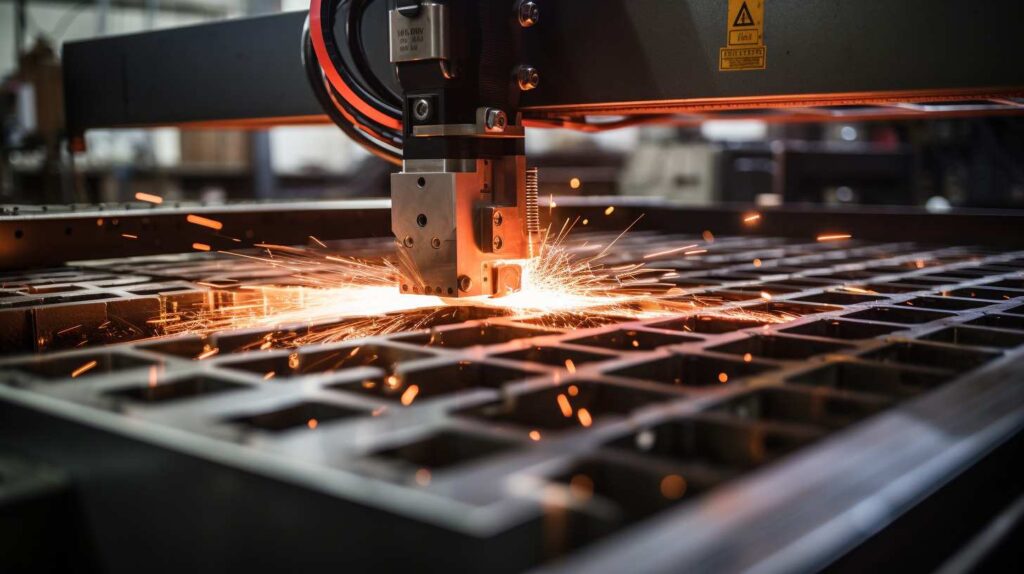
Sheet Metal Fabrication Forming Techniques
Once cut, sheet metal often needs shaping. Forming techniques transform flat metal into three-dimensional parts. Let’s explore the main methods used in the industry.
Bending
Bending creates angles in sheet metal. Press brakes apply force to fold metal along a straight line. This versatile technique produces everything from simple brackets to complex enclosures. Modern CNC press brakes offer precise control over bend angles and positions.
Rolling
Rolling curves sheet metal into cylindrical or conical shapes. The metal passes through a series of rollers, gradually increasing the curve. This technique creates parts like tanks, pipes, and architectural features. Rolling machines can handle a wide range of metal thicknesses and diameters.
Stamping
Stamping uses a die to form sheet metal into specific shapes. A press forces the metal into the die, creating the desired form. This high-speed process is ideal for mass production of identical parts. Stamping can create both simple and complex shapes in a single operation.
Hemming
Hemming folds the edge of a sheet back on itself. This technique strengthens edges, improves safety by removing sharp corners, and can create joints between parts. Hemming is common in automotive body panels and appliance manufacturing.
Curling
Curling rolls the edge of sheet metal into a circular shape. It adds strength to the edge and creates a smooth, finished look. Curled edges are often seen on metal drums, cylinders, and some types of tubing. This technique also helps in joining different metal pieces together.
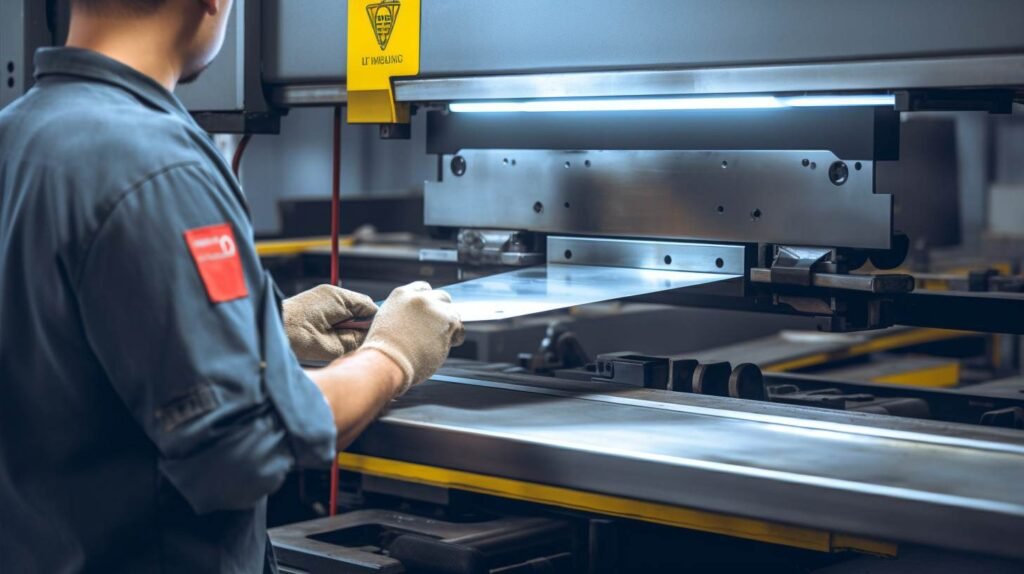
Sheet Metal Fabrication Joining Techniques
Joining techniques bring separate sheet metal components together to form complete products. These methods create strong, durable connections essential for many applications. Let’s explore two primary joining techniques used in sheet metal fabrication.
Welding
Welding fuses metal pieces by melting their edges. It creates permanent, strong joints that can be as strong as the base metal itself. Several welding methods are used in sheet metal fabrication:
MIG (Metal Inert Gas) welding uses a wire electrode and shielding gas to create clean, efficient welds. It’s versatile and widely used for various metals and thicknesses.
TIG (Tungsten Inert Gas) welding offers precise control and high-quality welds. It’s ideal for thin materials and visible joints where appearance matters.
Spot welding applies electrical current and pressure to join overlapping metal sheets. It’s fast and commonly used in automotive and appliance manufacturing.
Riveting
Riveting joins metal sheets using small metal pins or bolts called rivets. This method creates strong, permanent connections without heat. Riveting offers several advantages:
It works well for joining dissimilar metals that can’t be welded easily. Rivets distribute stress over a wider area, making them suitable for high-stress applications.
Blind rivets allow for joining from one side of the workpiece, which is useful when the other side is inaccessible. Riveting is often faster than welding for certain applications and requires less specialized skill.
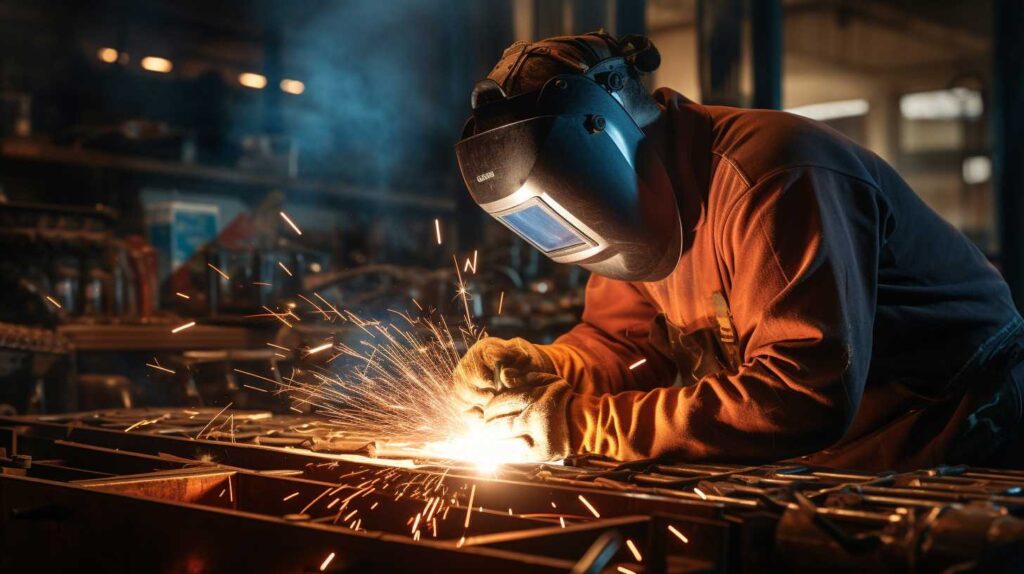
Materials Used in Sheet Metal Fabrication
The choice of material in sheet metal fabrication can make or break a project. Different metals offer unique properties that suit various applications. Here are some common sheet metal fabrication materials:
- Stainless steel
- Pre-plated steel
- Carbon steel
- Aluminum
- Copper
- Brass
Surface Finishes for Sheet Metal Fabrication
Sheet metal fabrication offers various surface finishing options to enhance both form and function:
Powder Coating
- Applies a dry powder that’s heat-cured
- Creates a durable, colorful finish
- Resists chipping and fading
- Popular for outdoor furniture, automotive parts, and appliances
Anodizing
- Creates a hard oxide layer on aluminum surfaces
- Improves corrosion resistance
- Allows for coloration of the metal
- Common in consumer electronics, architectural components, and sporting goods
Plating
- Deposits a thin layer of metal onto the surface
- Chrome plating offers a bright, reflective finish and corrosion resistance
- Nickel plating improves wear resistance
- Used in automotive trim, plumbing fixtures, and industrial equipment
Brushing or Polishing
- Creates a smooth, satin-like finish
- Removes minor imperfections
- Adds visual appeal
- Popular for brushed stainless steel in appliances and architectural applications
Painting
- Offers unlimited color options
- Provides corrosion protection
- Modern spray techniques ensure even coverage and a smooth finish
- Versatile and widely used across many industries
Each finish serves specific purposes, from improving durability to enhancing aesthetic appeal, allowing fabricators to tailor the final product to exact specifications.
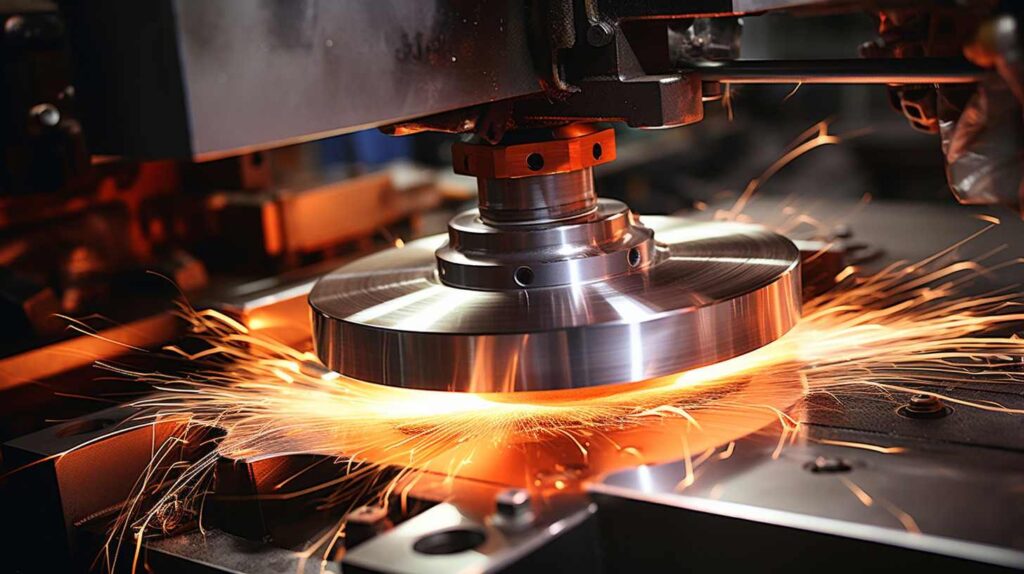
Applications of Sheet Metal Fabrication
Sheet metal fabrication plays a crucial role in many industries. Let’s explore its diverse applications.
Automotive Industry
In the automotive industry, sheet metal fabrication is indispensable. Car bodies, hoods, and doors all rely on this process. It creates lightweight yet strong components that improve fuel efficiency and safety.
Aerospace Industry
The aerospace industry also heavily depends on sheet metal fabrication. Aircraft fuselages, wings, and engine parts often start as flat metal sheets. Precise fabrication ensures these components can withstand extreme conditions.
Construction and Architecture
Construction and architecture benefit greatly from sheet metal work. Roofing, gutters, and HVAC systems are common applications. Fabricated metal panels add both functionality and aesthetic appeal to modern buildings.
Electronics and Appliances
Electronics and appliances owe much to sheet metal fabrication. Computer cases, refrigerator bodies, and washing machine frames are all products of this process. It provides durability and helps manage heat in these devices.
Medical Equipment
In the medical field, sheet metal fabrication creates essential equipment. Surgical tables, medical carts, and imaging machine enclosures often use fabricated metal parts. These components meet strict hygiene and durability standards.

Benefits of Sheet Metal Fabrication
Lightweight Parts Manufacturing
Lightweight parts manufacturing is a major plus. Sheet metal fabrication creates strong components without excess weight. Lighter parts mean better fuel efficiency and performance.
Extensive Techniques and Materials
Fabricators can work with a wide range of metals, from aluminum to stainless steel. Each material brings unique properties to the table.
Strong & Durable
Strength and durability are hallmarks of sheet metal fabrication. Despite their lightweight, fabricated parts can withstand significant stress. Proper design and material selection result in components that last for years.
Shengen’s Sheet Metal Fabrication Services
At Schengen, we offer a full range of sheet metal fabrication services. Our capabilities cover everything from prototyping to mass production. We work with diverse materials to meet your specific needs.
Our engineers bring over a decade of experience to every project. They provide valuable insights and support throughout the fabrication process. From design optimization to production troubleshooting, our team has you covered.
Do you need a reliable sheet metal parts manufacturer? Shengen is the place to go. We specialize in sheet metal laser cutting, stamping, surface finish, and CNC Machining. Reach out to Shengen Today and seek help from professionals!
Conclusion
Sheet metal fabrication transforms flat metal into functional, complex parts through a variety of cutting, forming, and joining techniques. From everyday household items to advanced aerospace components, this versatile process shapes the world around us. By understanding the basics of sheet metal fabrication, you can make informed decisions for your next project, whether you’re an engineer, designer, or business owner.
FAQs
What is the maximum thickness for sheet metal fabrication?
The maximum thickness depends on the specific fabrication technique and equipment used. Generally, sheet metal ranges from 0.006 inches to 0.25 inches thick. Thicker materials are often considered plate metal. However, some heavy-duty fabrication equipment can handle thicker sheets, up to 0.5 inches or more.
What Is the Difference Between Sheet Metal Fabrication and Machining?
Sheet metal fabrication primarily works with thin, flat metal sheets, shaping them through cutting, bending, and joining. Machining, on the other hand, typically starts with solid blocks or bars of material and removes excess to create the final shape. Fabrication is often faster and more cost-effective for thin-walled parts, while machining excels at creating precise, solid components.
How Long Does the Sheet Metal Fabrication Process Take?
The timeline varies greatly depending on the complexity of the part, quantity needed, and current shop workload. Simple parts might be fabricated in a day or two, while complex projects could take weeks.
Can Sheet Metal Fabrication Be Used for Prototyping?
Absolutely. Sheet metal fabrication is excellent for prototyping. Many techniques, especially laser cutting and CNC punching, can quickly produce parts from CAD files. This allows for rapid iteration and testing of designs before committing to full production. Prototyping with sheet metal can be cost-effective and provide a realistic representation of the final product.
What are the main sheet metal fabrication techniques?
The main techniques include cutting, forming, and joining. Each project may use a combination of these methods to create the final part. The choice of techniques depends on factors like material type, part complexity, production volume, and required tolerances.
Hey, I'm Kevin Lee

For the past 10 years, I’ve been immersed in various forms of sheet metal fabrication, sharing cool insights here from my experiences across diverse workshops.
Get in touch

Kevin Lee
I have over ten years of professional experience in sheet metal fabrication, specializing in laser cutting, bending, welding, and surface treatment techniques. As the Technical Director at Shengen, I am committed to solving complex manufacturing challenges and driving innovation and quality in each project.


